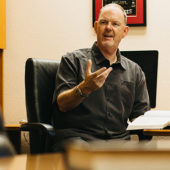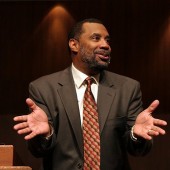Jesus died for our sins – so we can release our anger against others. Listen as Susie unpacks the process of apology and forgiveness with Dr. Gary Chapman and Revive Our Heart’s Nancy Leigh DeMoss.
What are the languages of apology? Dr. Chapman describes each one.
1. Expressing regret.
“Tell them what you’re sorry for. Not just ‘I’m sorry,’ but ‘I’m sorry that I lost my temper and yelled at you.’ What you’re trying to do is communicate that you are feeling badly about what you’ve done … or failed to do.”
2. Accepting responsibility. Dr. Gary calls this “one of the fundamental languages of apology.”
“It may not be morally wrong, but if you hurt the other person, you need to admit it.”
3. Making restitution.
4. Genuinely repenting.
5. Requesting forgiveness.
“For some people, this is what it means to apologize. However you word it, that’s what they’re waiting for. [Otherwise], the barrier’s going to sit there. You’re reaching out and asking for mercy instead of justice.”
Nancy Leigh DeMoss says, the process of forgiveness begins with realizing that we’re going to be hurt. “It’s really a matter of knowing how you’ll respond when the hurts come. It’s not a magical formula but it’s always possible to make that choice.”
Forgiveness means releasing others from our own “courtroom” and giving them to God. Nancy says this is impossible without Christ.
“We don’t have it in ourselves to extend forgiveness… unless we line up with what Christ has done in forgiving us and removing our sin. The power to forgive is not because we buck up and forgive – it’s Christ in us and His forgiveness, grace flowing to us and through us to others. This is what makes it possible. We need to practice breathing grace in and breathing grace out.”
Key Scriptures: Isaiah 41:10; Matthew 6:12; Hebrews 12:14-15
Featured Songs: Losing by Tenth Ave North; Seventy Times Seven by Chris August; Calvary by Hillsong






















